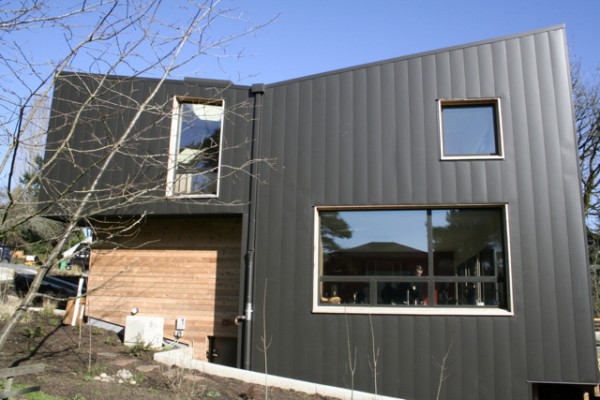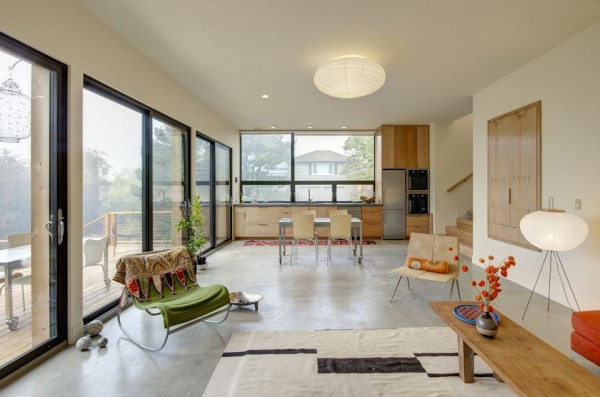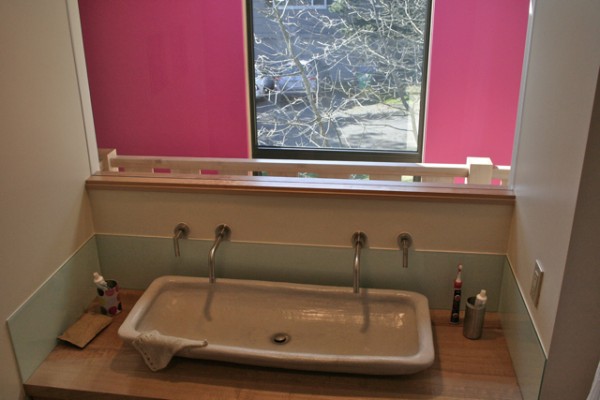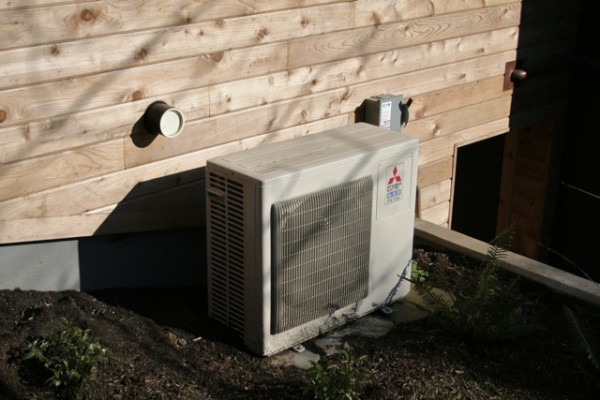What does a house look like that consumes no net energy, no net water, and sends no waste to the city sewers? One possible example was finished and occupied last September in Portland, Oregon, and it looks really good.
This past weekend it was deliciously sunny and breezy touring homes part of the Portland Modern Home Tour, disproving two common fears about Passive Houses in northerly climates. The PH goal (minimal energy devoted to heating and air conditioning) can limit how much of the total external surface can be glass, and how much of that glass opens.

But the Departure architecture firm gave their Full Plane Passive House a 24-foot wall of 8-foot sliding glass doors on the south side of the great room—just like in the wasteful old days of the 1960s, except that now the sliding doors are triple-glazed and exceedingly airtight when closed.

The actual area of glass is less than it seems, thanks to shrewd placement and an open design. For example, the main bath is upstairs against the east wall, which has no windows. But ample daylight streams in through an internal window which looks west across a balcony and an open stairwell to a generous upstairs window.

But let’s go back to that line about net-zero energy and water and waste. It’s called the Living Building Challenge, and it may the toughest standard in green building. At this point the house can only be said to “pursue” Living Building certification, which is only awarded after consumption has actually been measured over 12 months of occupancy.
Rain falling on the “butterfly” roof flows to a cistern in the basement, where after purification it fully serves household water needs. After draining from the sinks and shower, it is stored for garden irrigation. All water beyond the storage capacity is dispersed deep under the yard. And the dry composting toilets are not connected to any water pipes at all.
That takes care of water and waste. Heating and cooling needs are minimized by an extremely well-insulated, airtight shell. In this house there is little exotic about the walls and windows: walls hold almost a foot of cellulose insulation within what amounts to two traditional stick-built walls, the inner and outer “curtain” walls about 2 inches apart. Windows, by Accurate Dorwin, are triple-paned within fiberglass frames.

The modest heating and cooling needs that remain are met by a heat recovery ventilation system, with just one head downstairs and one upstairs. A single blower moves air simultaneously in and out, and a small Mitsubishi condenser unit outdoors exchanges heat from the outgoing to the incoming air, or vice versa in summer. Significant heat is contributed by appliances and by bodies, human and canine.
Together with LED lighting throughout, these systems reduce household electric consumption so low that, if all goes well, photovoltaic panels on the south-sloping half of the roof will generate at least an equal amount of electricity over the course of a year.
The three-bedroom, 1729-square-foot home was built by JRA Green Building.